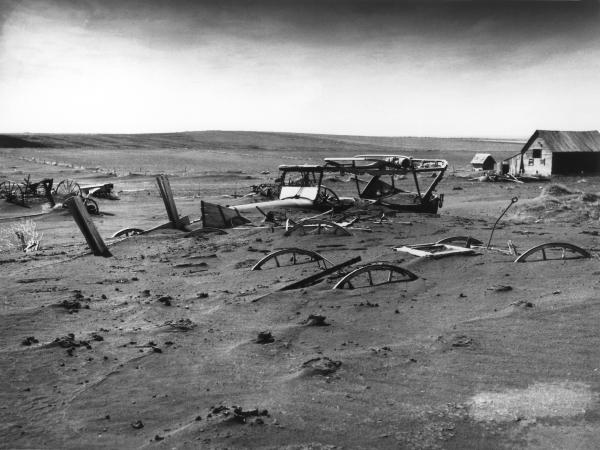Langue nord-amérindiennes, langues
The AIM Song
anonyme

Maamwi g’da maashkozimi
(continuer)
(continuer)
envoyé par Bernart Bartleby 23/9/2015 - 13:58
Parcours:
Génocide des Amérindiens
Tunkasila wamayanka yo
anonyme

Canzone tradizionale in Lakota (o Lakhota, o Teton, o Teton Sioux), della famiglia linguistica Siouan, insieme delle lingue native parlate nelle Grandi Pianure, il cuore del Nord America.
Interpretata, tra gli altri, da Calvin Standing Bear, musicista discendente Oglala/Sicangu Lakota originario della riserva Rosebud in Sud Dakota, nel suo disco intitolato “Wakan Olowan” (“Sacred Songs”).
Non sono un credente, ma credo che fosse impossibile per un nativo, fino a 150 o 200 anni fa, non pensare a “Tunkasila”, al Grande Padre Creatore guardando l’orizzonte nelle Great Plains...
Poi arrivarono l’uomo bianco e la sua “civiltà”...
Interpretata, tra gli altri, da Calvin Standing Bear, musicista discendente Oglala/Sicangu Lakota originario della riserva Rosebud in Sud Dakota, nel suo disco intitolato “Wakan Olowan” (“Sacred Songs”).
Non sono un credente, ma credo che fosse impossibile per un nativo, fino a 150 o 200 anni fa, non pensare a “Tunkasila”, al Grande Padre Creatore guardando l’orizzonte nelle Great Plains...
Poi arrivarono l’uomo bianco e la sua “civiltà”...
Tunkasila wamayanka yo
(continuer)
(continuer)
envoyé par Bernart Bartleby 15/2/2014 - 14:57
Parcours:
Génocide des Amérindiens
Mahk Jchi

Lyrics and Music by Jennifer Elizabeth Kreis-berg, Pura Fé Crescioni & Soni Moreno-Primeau
Performed by Ulali: Pura Fe, Soni and Jen.
Album: Music For The Native Americans (Robbie Robertson's album)
Tutelo/Saponi were Siouan languages spoken in the Ohio Valley. Tutelo was a language of Virginia. The last fluent speaker died in the 1990's, and few Tutelos remember anything of the old language today.
However some Tutelo people are trying to revive their ancestral language for cultural purposes.
The Saponi language has been extinct much longer, but it is thought to have been a dialect of Tutelo, both from the similarity in vocabulary and from historical accounts indicating that people from the two tribes could understand each other without an interpreter. The main difference is that the Saponi dialect appears to have borrowed a number of vocabulary words from southern Algonquian languages like Powhatan and a few from African languages (the Saponi Indians were known for sheltering African slaves).
Performed by Ulali: Pura Fe, Soni and Jen.
Album: Music For The Native Americans (Robbie Robertson's album)
Tutelo/Saponi were Siouan languages spoken in the Ohio Valley. Tutelo was a language of Virginia. The last fluent speaker died in the 1990's, and few Tutelos remember anything of the old language today.
However some Tutelo people are trying to revive their ancestral language for cultural purposes.
The Saponi language has been extinct much longer, but it is thought to have been a dialect of Tutelo, both from the similarity in vocabulary and from historical accounts indicating that people from the two tribes could understand each other without an interpreter. The main difference is that the Saponi dialect appears to have borrowed a number of vocabulary words from southern Algonquian languages like Powhatan and a few from African languages (the Saponi Indians were known for sheltering African slaves).
Mahk jchi tahm buooi yahmpi gidi
(continuer)
(continuer)
envoyé par giorgio 19/9/2012 - 08:28
Parcours:
Génocide des Amérindiens
Tooygapyu yuntle soyra
anonyme
Circa 1880
Canto delle tribù Squitmush (o Squitmish)
Trascrizione di Elijah Belleville
Le tribù Squitmush, stanziate nel Colorado, vennero sistematicamente sterminate, assieme alla loro lingua.
Di loro rimane forse solo questo canto trascritto circa nel 1880 da Elijah Belleville, anch'egli un nativo americano. La versione inglese è sua, sulla quale ho condotto la versione italiana.
Con questo canto commovente e terribile nella sua semplicità, le CCG raggiungono la quota di 1500.
(Riccardo Venturi)
Canto delle tribù Squitmush (o Squitmish)
Trascrizione di Elijah Belleville
Le tribù Squitmush, stanziate nel Colorado, vennero sistematicamente sterminate, assieme alla loro lingua.
Di loro rimane forse solo questo canto trascritto circa nel 1880 da Elijah Belleville, anch'egli un nativo americano. La versione inglese è sua, sulla quale ho condotto la versione italiana.
Con questo canto commovente e terribile nella sua semplicità, le CCG raggiungono la quota di 1500.
(Riccardo Venturi)
Tooyga! Tooyga! Tooyga!
(continuer)
(continuer)
envoyé par Riccardo Venturi 20/3/2005 - 23:59
×
![]()


Canto privo di titolo e costituito da suoni non lessicali. La scelta è deliberata, visto che l’intento era quello di creare un canto unitario intertribale. La paternità è incerta ma è attibuibile a uno o più dei membri fondatori dell’American Indian Movement (AIM), organizzazione di difesa (e di autodifesa) dei diritti dei nativi amercani nata nei primi anni 70. Proprio per questo, il canto è noto come “The AIM Song”.
La melodia si basa su quella di un antico canto d’onore Ojibwe/Chippewa.
Più recentemente Chi-bineshiinh ("Big Little-Bird"), nome indiano di Jim Northrup (1943-), scrittore e poeta nativo, ha composto per il canto un testo vero e proprio in “Anishinaabe” (letteralmente del “popolo delle origini”), dialetto appartenente alla famiglia delle lingue algonchine.
Il canto, interpretato da Milton 'Quiltman' Sahme, amico e collaboratore di John Trudell, è presente nella... (continuer)